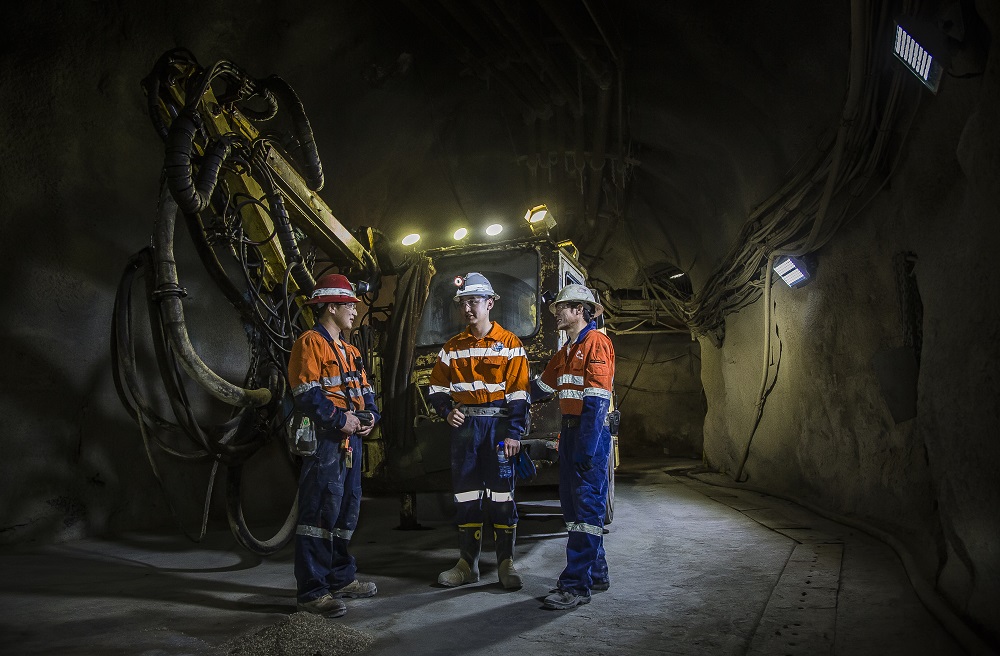Rio Tinto has provided an update on its majority-owned Oyu Tolgoi copper-gold underground project, in Mongolia, admitting that stability risks identified with the previously approved mine design has led to an estimated cost increase and delay to first production.
First output is now expected to be achieved between May 2022 and June 2023, a delay of 16 to 30 months compared with the original feasibility study guidance in 2016, while preliminary estimates for development capital spend is now $6.5-$7.2 billion, $1.2-$1.9 billion up on the $5.3 billion previously disclosed.
These estimates are preliminary in nature – the equivalent of a conceptual or order of magnitude study – but Rio said a definitive estimate should be forthcoming in the second half of 2020.
Oyu Tolgoi Underground is Rio’s major copper growth project. When the underground mine is fully ramped up, the existing open pit and underground, combined, are expected to produce more than 500,000 t/y of copper.
Alongside this announcement, Rio Tinto also published its June quarter production results, which showed Rio’s share of production of the Oyu Tolgoi open-pit mine was 13,100 t of copper over the period.
Since February, key below ground infrastructure such as the control room facility and the jaw crusher system have been completed and construction of shafts 3 and 4 is progressing well, according to Rio. The commissioning of shaft 2 remains on track for October 2019.
As Rio previously advised, enhanced geotechnical information and data modelling suggests there may be some stability risks identified with the approved mine design. As a result, several other mine design options are under consideration to complete the project.
Rio said: “Studies to date indicate that these options may result in some of the critical underground infrastructure, such as the mid-access drive and the ore handling system, being relocated or removed. Options relating to the sequence of crossing the panel boundaries during mining operations are also being analysed.”
These options are being evaluated to determine the final design of the first panel of mining, “Panel 0”, with the work anticipated to continue until early 2020, Rio said. This is where the definitive estimate date of the second half of 2020 comes from. This estimate will include the final estimate of cost and schedule for the remaining underground project and the preferred mine design approach.
Rio said: “All options under consideration present a pathway to sustainable first production, and have different cost and schedule implications. To date, these have been defined to a level of accuracy associated with a conceptual study or order of magnitude study, and, therefore, significantly more work is required to complete the final assessment.”
Preliminary information now suggests, depending on which mine design options are adopted, first sustainable production could be achieved between May 2022-June 2023. This range includes contingency of up to eight months reflecting the “unexpected and challenging geotechnical issues, complexities in the construction of shaft 2 and the detailed work still required to reach a more precise estimate”, Rio said.
The company added: “The company will continue to focus on minimising the impact to project schedule and cost, as it works through the detailed analysis and testing of each mine design option. Although further work is necessary to reach definitive conclusions, Rio Tinto is reviewing the carrying value of its investment in the project and will announce if any changes are required in the half year results on August 1, 2019.”
Stephen McIntosh, Group Executive, Growth & Innovation, said: “We have made significant progress on a number of key elements in the construction of the underground project during 2019. However, the ground conditions are more challenging than expected and we are having to review our mine plan and consider a number of options. Delays are not unusual for such a large and complex project, but we are very focused as a team on finding the right pathway to deliver this high value project.”
Arnaud Soirat, Chief Executive, Copper & Diamonds, said: “Oyu Tolgoi is a world-class orebody and a world-class business that is already producing copper, employing around 16,000 people and benefitting Mongolia through taxes, royalties and significant procurement. We are working with Turquoise Hill Resources and the Government of Mongolia to complete the underground, which will unlock the most valuable part of the mine for the benefit of all stakeholders.”
Oyu Tolgoi is owned 66% by Turquoise Hill Resources (THR) and 34% by the Mongolian government, with Rio Tinto holding a majority stake in THR.











